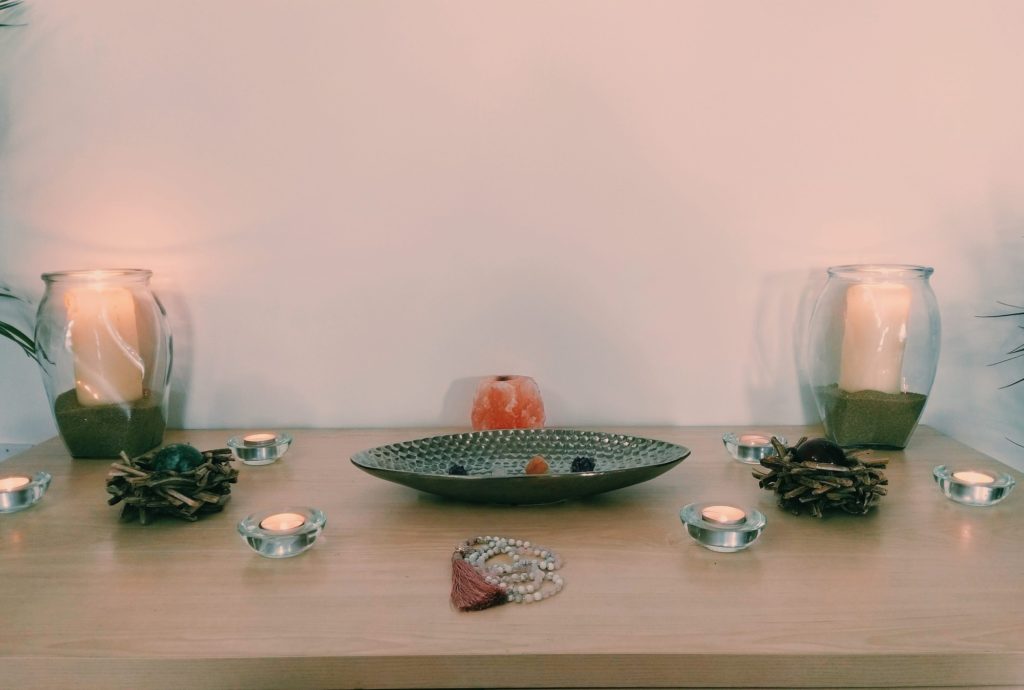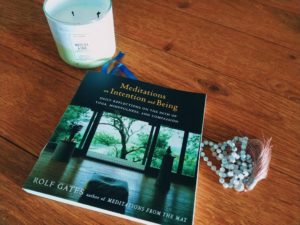
This post probably contains affiliate links. This means that you still pay the same price, but we earn a small commission. As an Amazon Associate, we earn from qualifying purchases. We only ever link products that we have tried and can recommend with confidence. These items are Nirvana Girl approved! We always appreciate your support in our journey!
Q: What is meditation?
A: Direction of the senses, and contemplation or concentration.
This post is the first in a series about meditation. Here we will discuss the science behind meditation, and how meditation actually works. In addition to this post the next several posts will cover the different types of meditation, setting up a meditation space, and ways to stay motivated and build your practice.
The Start
I first became interested in meditation during my yoga teacher training. I added meditation into my morning routine about a year and a half ago. I started noticing that when I got up early, and had time to prepare for the day, I felt less stressed. I was no longer running around in a rush to get to work on time. I felt peaceful and relaxed. Who doesn’t want to start their day like this?
Meditation has helped this feeling of peace and relaxation to last longer through the day. I get less stressed or frustrated at work, and I’m generally a happier person. Just ask Christy, she likes me better when I meditate! After meditation I am better able to appreciate the little moments in life. For example, I admire the beautiful blue sky on a winter’s day as I drive to work. Another simple pleasure is one of my favorite songs playing as I get ready for the day. By being mindful and present, these little things bring me joy where before they would have slipped past in the rush.
This TED talk is a wonderful introduction into how simple this whole idea really can be. Filled with analogies from a former monk on meditation and mindfulness, it’s short and simple.
The Science
Meditation can also have profound physical effects on our bodies and brains. These beneficial changes are based in science and anatomy. I find it fascinating how science can prove what this ancient practice has shown for ages.
Some of the physical effects of meditation are slowing of the breath and heart rate. This can help improve anxiety. Brain activity also slows down to the theta state. Theta brain waves are slower and lower in frequency than our normal active state. One example of this is when you are driving a familiar highway and realize you have lost track of the last several minutes of your drive. By spending more time in this relaxed state, meditation can help improve depression and chronic pain. In addition to these benefits, meditation can help with self regulation by stimulating parts of the brain responsible for attention and the autonomic nervous system. The autonomic nervous system is responsible for involuntary body functions such as breathing and your heart beat. This is just a small sample of the ways in which meditation affects your physiology.

My Experience
Lately I have experienced first hand the way meditation can help with chronic pain. I have been struggling trying to find a cause, remedy, or pain management solution for around a year now. Meditation has helped me to direct my attention away from the pain, or on days where that just isn’t happening to experience it without judgment or reaction. As a result, I am better able to enjoy life and experience the present moment without obsessing over the future. All things considered, I credit meditation with helping keep me sane during this period of my life.
Meditation can also help improve attention and slow the progression of aging in the brain. Similar to the effects of doing sudoku or other brain exercises, meditation can improve working memory and executive decision making. This is very encouraging, as practicing regularly for 30 minutes to an hour a day can have life long benefits. Another area that can benefit is the temporal parietal junction of the brain which is responsible for empathy and compassion.
In this TEDx talk, neuroscientist Sarah Lazar explains how meditation can slow the effects of aging on the brain. This talk also shows how meditation is improving memory and changing the way our brains are shaped.
The Habits
By practicing regularly and for an extended period of time, we can start to notice these benefits. Building good habits to rely on and shape our lives helps encourage these changes. Establishing a regular meditation practice is difficult but worthwhile. The ability to rewire our brains via these repeated habits is referred to as neuroplasticity. Throughout our lives we can continue to grow and change how we think.
What you practice grows stronger. Here Dr. Shauna Shapiro explains the importance of habits and meditation.

The longer I practice the more I notice meditation slipping into other areas of my life. I am able to fall asleep earlier, or concentrate longer. When I am at work, a couple slow deep breaths are able to help me reset my mental state. Breathing exercises bring back some calm and patience when I start to feel stressed. During times when friends or family gather it is easier to be present and enjoy the time with them instead of wandering off mentally. Cooking or eating a meal has become a practice in being present. Now I pay attention to the process of preparing my meal, engaging my senses and savouring the results without distraction.
The Resources
The many benefits of meditation that I have written about here are just the tip of the iceberg. There are numerous other resources, youtube videos, and books out there. I found 